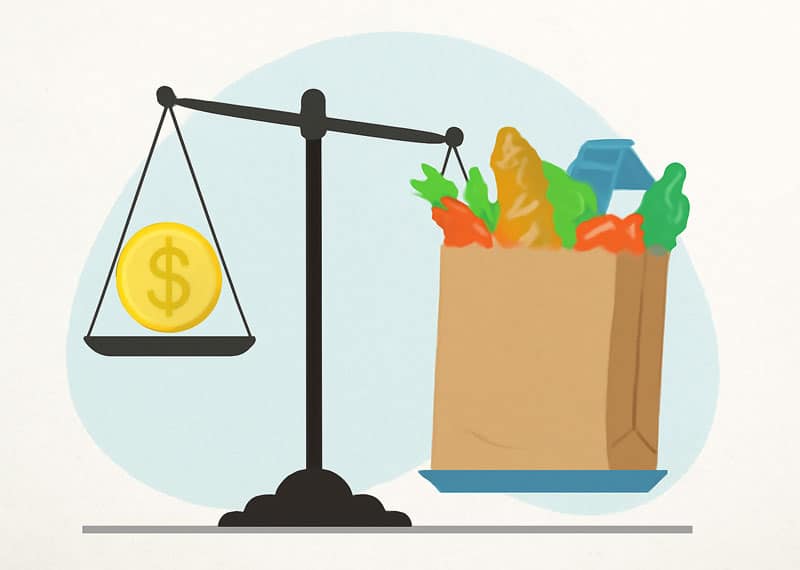
Online buy now, pay later (BNPL) shopping options made their appearance in the early 2010s, and mainly offered a way to purchase larger-ticket items such as electronics, retail furniture, and other goods the purchaser might otherwise not have been able to buy on the spot. The plans worked a lot like the old-fashioned layaway plans in department stores, with two important differences: you got the product right away, and you paid a premium for the privilege.
The system always had some drawbacks, including comparatively high interest rates for short-term borrowing, a tendency among some regular users to lose track of their upcoming payments, and the potentially negative impact a series of short-term loans could have on credit scores. The ability to pay over time can also make shoppers on a budget less cautious about the total amount they’re spending.
Then it got worse.
As buy now, pay later options have proliferated in recent years and the opportunities for financing purchases have expanded, many buyers have shifted to using BNPL plans to cover both small purchases and day-to-day necessities.
BNPL Usage Has Skyrocketed
Unsurprisingly, adoption of BNPL is highest among younger generations. In response to a survey conducted by Motley Fool Money, 48% of millennials said they have used BNPL, along with 40% of Gen Z and 28% of Gen X. Baby boomers had the lowest rate of adoption, but 13% said they’d used BNPL at least once. In fact, more than half of Gen Z, millennial and Gen X respondents said they used BNPL more often than credit cards. 40% of millennials said they use BNPL at least once a week.
How People Use BNPL is Also Changing
It’s not just how often people use buy now, pay later that’s changed. There’s also been a significant shift in what they’re using deferred payment for. While online shopping and electronics still took the lead, 28% of users said they’d used BNPL to purchase groceries, and 22% said they’d used it for food delivery. Many also reported using BNPL to purchase household necessities, personal care products and cosmetics, and clothing and accessories.
In June of 2025, Lending Tree reported that 36% of consumers surveyed were at least considering applying for one or more BNPL loans that month.
It’s easy to see how BNPL would be an appealing solution in some circumstances–perhaps even more so than the original type of BNPL purchases. After all, you can put off purchasing a stereo, but not food, toilet paper, or even a dress shirt for a job interview. But using BNPL for necessities creates the same type of vicious circle using credit cards can.
The Downside of Using BNPL for Food and Essentials
When you put groceries on your credit card or use BNPL, you solve a short-term problem. But you also make your groceries more expensive. You stretch your already-strained budget even thinner by adding new payments to the roster. The next month, you’ll still have to pay your rent, utilities, car insurance and other bills and you’ll still have to buy groceries–but you’ll also have to make your BNPL payment.
For many, that’s not possible. So, either bills get paid late or the consumer ends up taking out another BNPL loan to buy the next round of groceries. This creates a cycle similar to the one payday loans often trigger.
Many BNPL Borrowers Have Buyer’s Remorse
39% of respondents to the Motley Fool survey referenced above said they’d regretted using BNPL after they’d incurred the costs. Regrets were most common among Gen Z and millennials.
Sometimes, those regrets were the same type anyone might have after making a purchase they couldn’t quite afford. But there are many other reasons BNPL buyers may have second thoughts. For example:
-
The Lending Tree survey mentioned above revealed that 41% of BNPL borrowers said they’d made payments late–a situation that can increase interest paid or trigger late fees
-
Many borrowers wrongly assume that BNPL loans can help their credit
-
Borrowers don’t always understand how much stretching out payments with BNPL can increase the total amount paid
Fewer than half of BNPL borrowers responding to the Motley Fool survey said they budgeted for BNPL payments in advance. More than 30% said they’d lost track of payments.
Long-Term Solutions for Long-Term Problems
The problem with shuffling debt to make ends meet is that being in debt is both stressful and expensive. Not only does financing one expense in order to pay outstanding debt on something older extend the cycle, it keeps debt growing.
What many people don’t realize when they’re in the moment is that the debt they took on last month or last year is the reason they feel forced to take on more debt today. Often, the best answer isn’t scrambling to find a way to get through this month while juggling debt–it’s to break the cycle, get rid of that backlog of debt and free up your income to cover your current expenses and plan for your future.
Unfortunately, most people who are stuck in that cycle are too busy trying to manage crises and make it through the month to think long term. Many spend years burdened by financial stress, and add thousands or tens of thousands of dollars to the amount they owe.
Chapter 7 bankruptcy offers a fresh start for many people trapped by debt. Imagine your monthly budget without your current credit card payments, payments toward medical bills, and other unsecured debts. Imagine not seeing your outstanding debt grow every month even though you’re doing your best to make payments.
If you’re ready for a new financial life, you owe it to yourself to schedule a free consultation with one of our experienced Los Angeles bankruptcy attorneys. We’ve helped thousands of people in and around Los Angeles get out of debt and create stronger financial foundations. To learn more, call 877-439-9717 or fill out our contact form.
